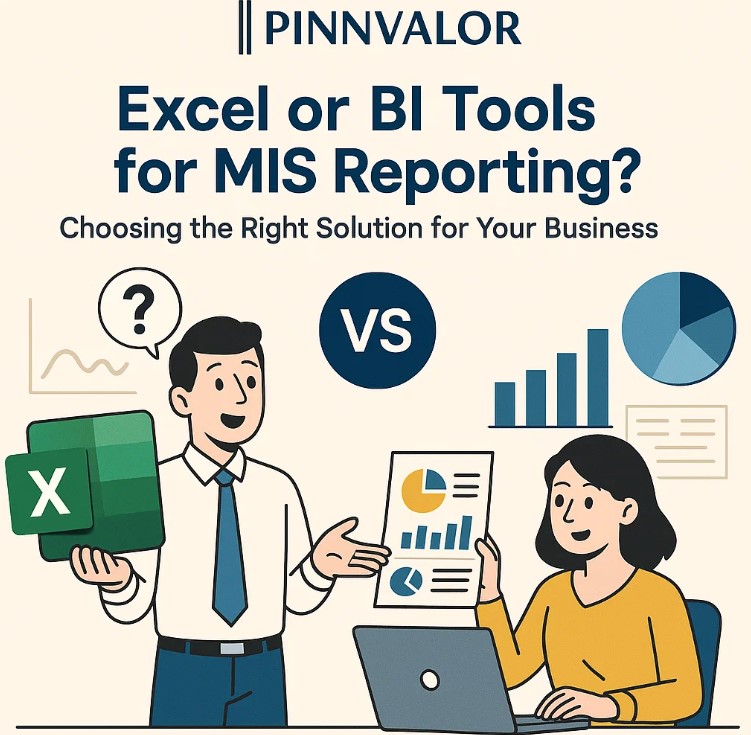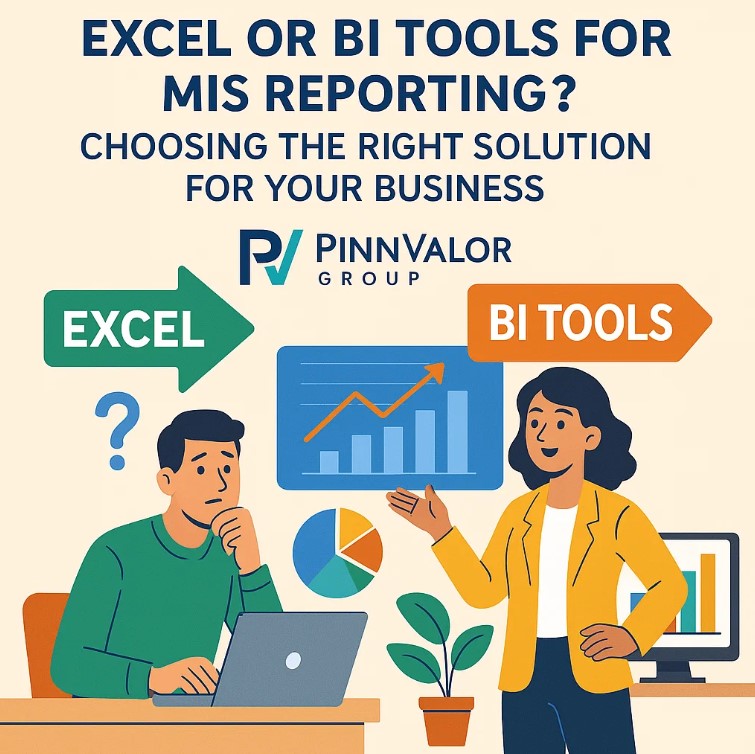
Excel or BI Tools for MIS Reporting? Choosing the Right Solution for Your Business
In today’s data-driven business landscape, Management Information Systems (MIS) reporting is crucial for informed decision-making. The way organizations collect, analyze, and present their data can significantly impact operational efficiency and strategic planning. Two popular options for MIS reporting are Microsoft Excel and modern Business Intelligence (BI) tools. But which one should your business choose? This blog explores the strengths and limitations of both, helping you select the right reporting solution.
Excel or BI tools — which MIS reporting solution truly drives smarter business decisions?
Excel offers quick, flexible reporting for small teams, but BI tools unlock powerful insights at scale with automation and collaboration.
Understanding MIS Reporting
MIS reporting involves collecting data from various business processes and transforming it into actionable insights. It enables management to monitor performance, identify trends, and make evidence-based decisions.
Excel for MIS Reporting: The Classic Workhorse
Microsoft Excel has been a go-to tool for reporting and data analysis for decades. Its widespread availability and flexibility make it a default choice for many businesses.
Advantages of Using Excel
- Familiarity and Accessibility: Most business users know Excel, reducing training costs.
- Flexibility: Excel supports custom calculations, pivot tables, and a variety of charts.
- Cost-Effective: Included in many Microsoft Office packages; no extra subscription needed.
- Quick Prototyping: Easy to set up quick reports or dashboards without complex IT support.
Limitations of Excel
- Scalability Issues: Struggles with very large datasets and real-time data integration.
- Manual Errors: Susceptible to human error when entering or manipulating data.
- Collaboration Challenges: Difficult to manage versions and share live reports among multiple users.
- Limited Automation: Automating complex workflows can be time-consuming and requires advanced knowledge (e.g., VBA scripting).
BI Tools for MIS Reporting: The Modern Powerhouse
Business Intelligence tools such as Power BI, Tableau, Qlik Sense, and Looker have revolutionized how organizations handle data. They provide advanced data visualization, automation, and integration capabilities.
Advantages of BI Tools
- Data Integration: Seamlessly connect to multiple data sources including databases, cloud apps, and spreadsheets.
- Advanced Visualizations: Interactive dashboards with drill-down, filtering, and real-time updates.
- Automation & Refresh: Scheduled data refreshes reduce manual intervention and errors.
- Collaboration & Sharing: Web-based platforms enable easy sharing with stakeholders and secure access control.
- Scalability: Handle large volumes of data and complex queries efficiently.
Limitations of BI Tools
- Learning Curve: Requires time and training to master dashboards and data modeling.
- Cost: Licensing fees can be significant for small businesses.
- Implementation Time: Setting up data models and connections takes longer than Excel-based reports.
- Dependence on IT: Often needs IT support for integration and maintenance.

When to Choose Excel for MIS Reporting
Excel is best suited for:
- Small to medium datasets with limited complexity.
- Organizations with tight budgets or existing Microsoft Office infrastructure.
- Users who need quick, ad-hoc reports or prototypes.
- Teams with limited technical expertise or BI tool access.
When to Opt for BI Tools
BI tools are ideal when:
- Your data sources are numerous and complex.
- Real-time or near-real-time reporting is critical.
- You require interactive dashboards accessible across departments.
- Collaboration and data governance are priorities.
- Your organization is growing and needs scalable solutions.
Hybrid Approach: Combining Excel and BI Tools
Many organizations benefit from using both tools strategically:
- Use Excel for quick, one-off analysis and data cleaning.
- Employ BI tools for enterprise-wide dashboards and automated reporting.
- Export BI visuals or data to Excel for further customized calculations.
Conclusion
Choosing between Excel and BI tools for MIS reporting depends on your organization’s size, data complexity, budget, and reporting needs. Excel remains a valuable, cost-effective tool for basic reporting and analysis, while BI tools offer powerful capabilities for large-scale, collaborative, and dynamic MIS reporting.
Investing in the right tool not only improves reporting accuracy and efficiency but also empowers your management team with timely, actionable insights to drive business success.
